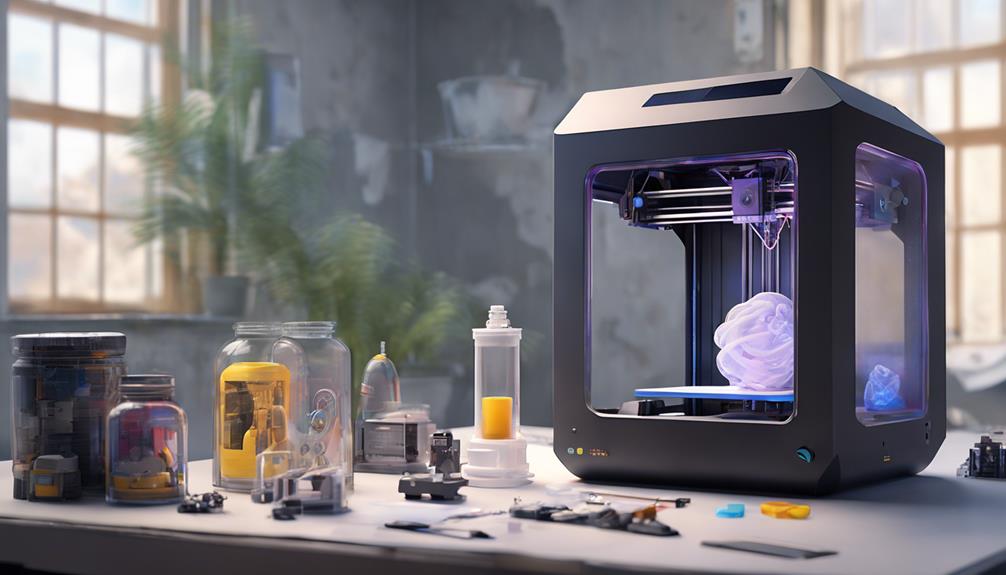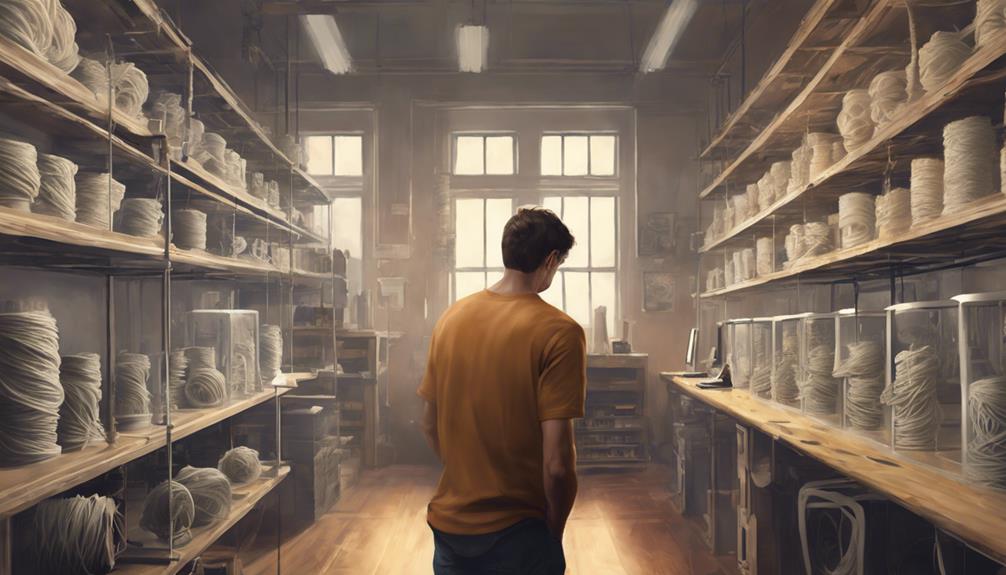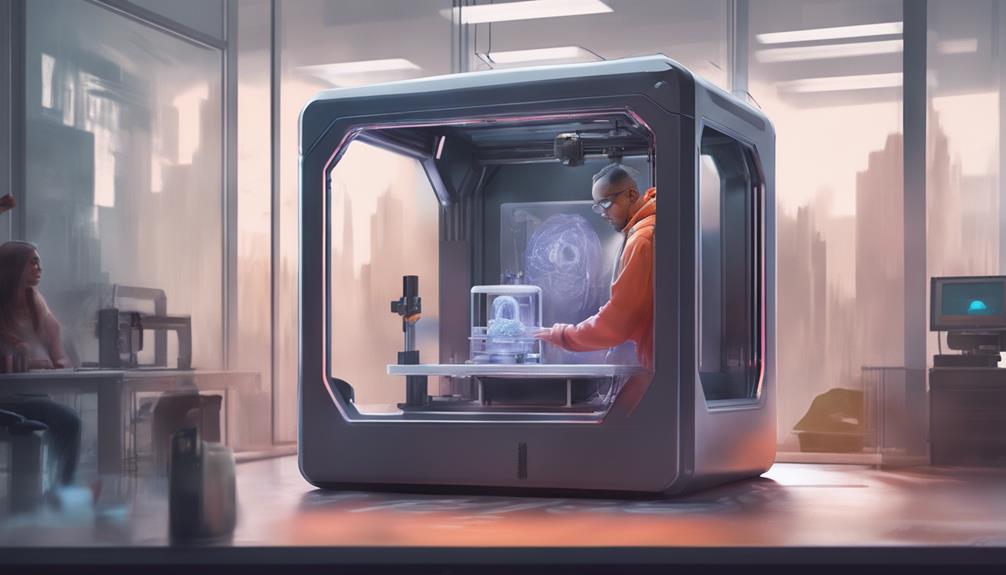If you're pondering the value of investing in enclosed 3D printers, consider this – the benefits go beyond mere print quality. The enclosure feature offers a range of advantages that may surprise you, making it a worthwhile consideration for your printing needs. From improved safety measures to enhanced efficiency, there are numerous aspects to explore before making your decision. Stay tuned to uncover the full scope of benefits that enclosed 3D printers can bring to your printing experience.
Benefits of Enclosed 3D Printers

When considering investing in enclosed 3D printers, you'll find that they offer a variety of advantages that can greatly enhance your printing experience. Enclosed printers maintain a stable working temperature, ensuring consistent print quality by preventing rapid temperature changes. They also help control harmful gases emitted during printing and isolate models from humidity, preventing material damage.
Additionally, enclosed printers minimize heat loss from the bed, reducing power consumption. With these benefits, you can expect improved print quality, reduced material wastage, and a more controlled printing environment. If you value precision and reliability in your prints, an enclosed 3D printer may be the ideal choice for your printing needs.
Drawbacks of Enclosed 3D Printers
When considering enclosed 3D printers, it's important to weigh the drawbacks against the benefits they offer. Enclosed printers tend to be more costly and can present challenges in terms of maintenance due to restricted access. Moreover, the elevated temperatures within the enclosure increase the risk of fire, especially if thermal protection fails. Enclosures constructed from flammable materials can also compromise safety.
Therefore, it's crucial to evaluate these disadvantages in comparison to the advantages of consistent temperature regulation, enhanced print quality, and reduced energy consumption before determining if an enclosed 3D printer suits your requirements.
Factors to Consider Before Investing

Considering the drawbacks and benefits of enclosed 3D printers, it's important to assess specific factors before deciding on an investment. Evaluate the types of materials you plan to print with – if you work with demanding materials like nylon or PC/ABS, an enclosed printer is essential for quality results. However, for simpler materials like PLA, the added cost of an enclosure may not be necessary. Beginners often find PLA easier to work with and may not require an enclosure initially.
Additionally, consider the maintenance requirements and safety features of enclosed printers, especially if you plan to print for extended periods. Understanding your printing needs and material requirements will help you make an informed decision on whether an enclosed 3D printer is the right investment for you.
Importance of Enclosures for Materials
To achieve the best results with different materials, enclosing your 3D printer is crucial. The enclosure helps maintain a stable environment during the printing process, guaranteeing quality outcomes. Below is a table outlining the importance of enclosures for various materials:
| Material | Importance of Enclosure |
|---|---|
| ABS | Prevents warping and improves layer adhesion. |
| PETG | Controls temperature for consistent prints. |
| Nylon | Assists in reducing moisture absorption. |
| PC/ABS | Secures ideal printing conditions. |
Advantages Beyond Printing Quality

Investing in an enclosed 3D printer extends benefits beyond just enhancing printing quality. The advantages go beyond the final product, offering you a more streamlined and efficient printing experience. Consider the following benefits:
- Enhanced Safety: Enclosed printers provide a safer environment by isolating hot components.
- Noise Reduction: Enjoy a quieter printing process with reduced noise levels.
- Customization Options: Personalize your printer with additional features like lights and sensors.
These perks make an enclosed 3D printer a valuable investment, enhancing not only the quality of your prints but also your overall printing journey.
Frequently Asked Questions
Do Enclosed 3D Printers Require Special Ventilation Systems?
Enclosed 3D printers don't require special ventilation systems. The enclosure helps manage harmful gases and maintains a stable temperature. It's important for certain materials but may not be needed for basic prints like PLA. Consider your printing needs.
Can Enclosed Printers Handle Large-Scale Printing Projects?
For large-scale printing projects, enclosed printers excel. They maintain stable temperatures, enhance print quality, and control harmful emissions. Enclosures are essential for demanding materials. Consider the benefits for consistent results and efficient printing.
Are There Safety Certifications for Enclosed Printer Enclosures?
When examining enclosed printer safety certifications, make sure the enclosure meets established standards for fire prevention and thermal protection. Look for validated certifications that guarantee safe operation and reduce potential hazards associated with high-temperature printing environments.
How Do Enclosed Printers Affect the Printer's Cooling System?
Enclosed printers maintain stable temperatures, enhancing print quality and controlling harmful emissions. They isolate models from humidity and minimize heat loss, reducing power consumption. Consider the benefits for demanding materials, safety, and consistent results.
Do Enclosed Printers Have Limitations on Filament Types?
Considering filament types, enclosed printers excel with materials like ABS and PETG due to controlled environments. PLA, a simpler filament, may not require enclosure. Evaluate your printing needs to determine if an enclosure is essential.
Conclusion
So, are enclosed 3D printers worth the investment? Absolutely! Because who needs consistent print quality, improved safety, and controlled printing environments anyway?
Just stick with those open printers and enjoy the unpredictable results, potential hazards, and chaotic workspaces. Who needs efficiency and peace of mind when you can have a rollercoaster of a printing experience instead?
Sounds like a blast, right?